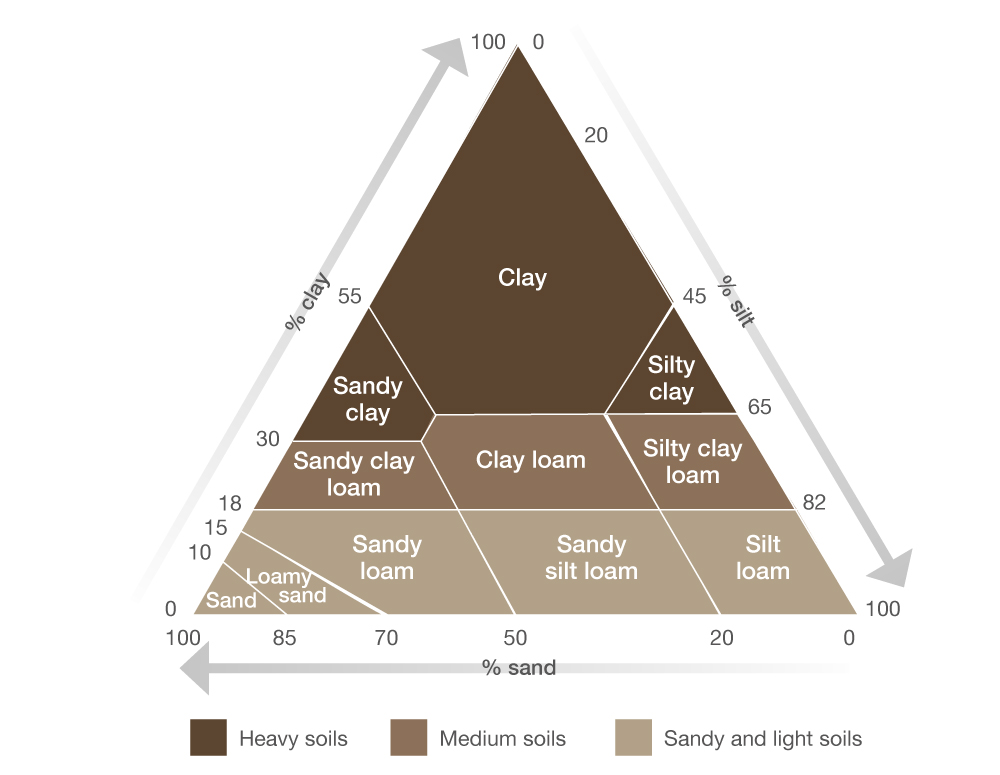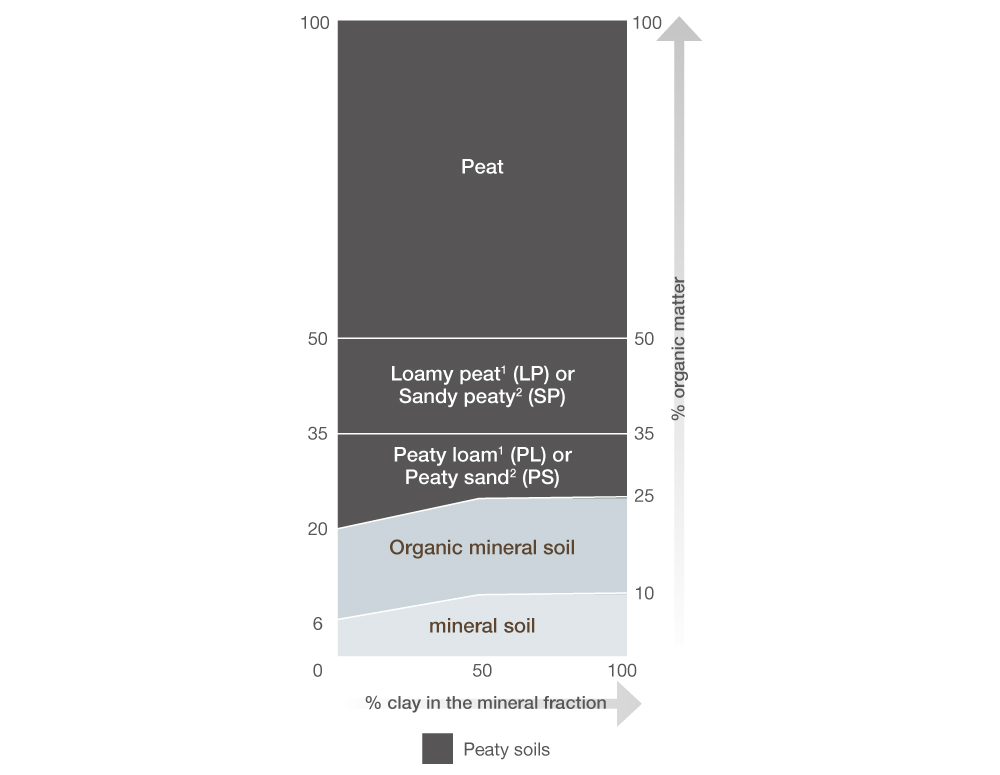- Home
- Knowledge library
- Soil texture and cation exchange capacity
Soil texture and cation exchange capacity
Different primary particles define a soil's texture and its ability to hold positively charged cations.
Inherent properties of soil
The amount of primary particles (sand, silt and clay) in soil defines its texture.
Marked changes in texture can occur vertically within the soil profile.
Texture determines how easy the soil is to work and can indicate how resilient the soil is to structural damage.
Soil texture is also a major factor that controls:
- How much water a soil can hold (water holding capacity)
- How available it is to plants (available water capacity)
- How good it is at holding onto lime or other nutrients (buffer capacity)
- How well roots can grow
It is not easy to change soil texture, but management needs to adapt to it.
Soil texture classes
Classification of soils into texture classes

Note: 1 Less than 50% sand in the mineral fraction 2 50% sand or more in the mineral fraction

Soils with more than 50% sand and less than 18% clay feel predominantly rough and gritty (sands, loamy sands, and sandy loams).
Soils with a high proportion of silt particles and under 35% clay feel predominantly smooth and silky (silt loams and silty clay loams).
Soils with more than 30% clay feel predominantly sticky, mould to form a strong ball and take a polish (sandy clays, clays, and silty clays).
Loams fall into the middle with a good mix of sand, silt and clay particles.
Organic (peaty) soils have an organic matter content greater than 20% and are grouped according to the balance of sand and organic matter content.
Cation exchange capacity
Cation exchange capacity (CEC) reflects the ability of a soil to hold positively charged cations (including important nutrients).
Easily exchanged with other cations, these adsorbed cations are available to plants. High CEC soils hold onto cations more effectively. Soils with a low CEC are more likely to acidify quickly and to develop deficiencies in potassium (K), magnesium (Mg) and other cations.
CEC is highly influenced by soil texture
The CEC of sand and silt in most soils is negligible. As clay is negatively charged, CEC increases with the amount of clay. CEC also depends on the type of clay, as well as soil pH and the amount of organic matter.
Well-broken down soil organic matter (often known as humus) has a high CEC.
As a result of the differences in active surface area (linked to CEC), the natural levels of organic matter held in sandy soil are much lower than in soil with more clay. This is because of how clay helps to stabilise organic matter in soil.
Useful links
Read more about the characteristics of different soil types
Read the Principles of soil management guide
Back to: Soil classification (type)
If you would like to order a hard copy of Principles of soil management, please use our online order form or call 0247 799 0069.
Have a question? Ask a member of the team:
.jpg)

